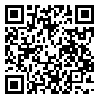Volume 15, Issue 5 (3-2014)
yafte 2014, 15(5): 52-61 |
Back to browse issues page
Download citation:
BibTeX | RIS | EndNote | Medlars | ProCite | Reference Manager | RefWorks
Send citation to:



BibTeX | RIS | EndNote | Medlars | ProCite | Reference Manager | RefWorks
Send citation to:
Akbari S, Salehi Amiri S F, Asti P, Adeli M. Frequency of positive results of vibroacoustic stimulation test in evaluating fetus health of pregnant women with non-reactive NST. yafte 2014; 15 (5) :52-61
URL: http://yafte.lums.ac.ir/article-1-1493-en.html
URL: http://yafte.lums.ac.ir/article-1-1493-en.html
Abstract: (9761 Views)
Background : Non-Stress Test (NST) is one of the most common methods used to evaluat fetus health, which its results are presented as reactive and non-reactive. One of the limitations of this test is the high number of false non-reactive cases. Different studies have suggested a combination of vibroacoustic stimulation and NST to reduce the number of non-reactive cases and duration of the test. Materials and Methods: The present study examined a group of tests, and used simple randomized sampling. The number of the sample was 55 individuals and the data collection tools were NST, sonography instruments, NST result paper, a tooth brusher, a watch, a demographic questionnaire, and a checklist. Vibroacoustic stimulation with an electronic brush was performed on fetus head situated on mother’s abdomen for 3 seconds and then NST was continued for a further 20 minutes. Then the results were recorded. The obtained data were gathered by SPSS 19 software, and analyzed using descriptive statistics. Results: In this study, 85.5% of the non-reactive cases changed into reactive through vibroacoustic stimulation. The amount of false positive was lower with vibroacoustic stimulation in comparison with NST. Conclusion: Vibroacoustic stimulation, as a technique for evaluating fetus health, makes it possible to save time, costs and personnel. It is also leads to sooner and better diagnosis of fetus health.
Keywords: Vibroacoustic stimulation, Non-stress test.
Type of Study: Original Research |
Received: 2014/03/1 | Accepted: 2014/03/1 | Published: 2014/03/1
Received: 2014/03/1 | Accepted: 2014/03/1 | Published: 2014/03/1
Send email to the article author
| Rights and permissions | |
 |
This work is licensed under a Creative Commons Attribution-NonCommercial 4.0 International License. |





